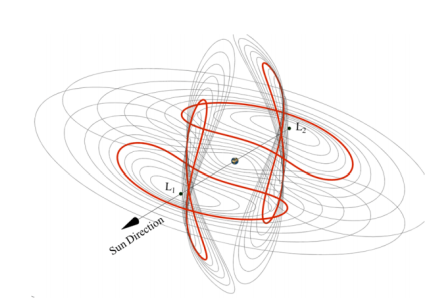New Class of “Easily Retrievable” Asteroids Discovered
Asteroids that pass close to Earth have become the focus of increased attention in recent years, partly because of the potential threat they pose to humanity.

But they are also a potential boon. For decades, science fiction writers and various space scientists have pointed out that asteroids offer a huge untapped source of valuable resources. Bringing just a small portion of this back to Earth could be a game changer for our planet.
And even if this stuff is too expensive to bring home, it could provide the raw materials for rocket fuel and perhaps even rockets themselves to be manufactured in space. Many visionaries have greedily eyed these resources in the hope that a new gold rush is just around the corner.
Indeed last year, a company called Planetary Resources, funded by a high profile list of investors including Google’s executive chairman Eric Schmidt and space entrepreneur Richard Branson, announced its intention to begin mining asteroids as soon as is feasible.
So finding target asteroids is hugely important. That’s why Daniel Garcia Yarnoz and a few pals at the University of Strathclyde in the UK today describe an entirely new category of asteroid that is easy to capture.
These guys have searched through the current database of around 9000 near-Earth objects looking for those that could be manoeuvred into an accessible orbit by changing their velocity by less than 500 metres per second.
By accessible orbit, these guys mean an orbit around the L1 or L2 Lagrangian points where the gravitational force of the Sun and Earth exactly balance. These points are around a million kilometres or so from Earth.
Garcia Yarnoz and co conclude that 12 asteroids meet this criteria. They call this new class of asteroid “Easily Retreivable Objects” or EROs and they make an interesting group.
The teams says that one of these asteroids with a diameter of between 2 and 7 metres and known as 2006 RH120, could be sent into orbit around L2 be changing its velocity by just 58 metres per second. They calculate that this could be done with a single burn on 1 February 2021 and would take just 5 years to reach its destination.
In fact, they point out that with a low thrust engine with a specific impulse of 3000s, it ought to be possible to move some 1500 tons into orbit.
Of course, there are various concerns. Safety is obviously paramount but the threat posed by accidentally sending an asteroid towards Earth is mitigated by the fact that it is only possible to move relatively small rocks with today’s technology.
Then there is the problem of what to do with an asteroid orbiting L1 or L2. These orbits are highly unstable so the asteroid would need to be constantly nudged to keep it on track. (Space scientists have already done this with many spacecraft such as the SOHO solar observatory, the Planck observatory and so on).
The asteroid might then be mined, if it were sufficiently valuable or studied or visited by humans or all of these options.
None of the 12 ERO asteroids are new to astronomers; in fact one of them became briefly famous when it was found to be temporarily orbiting the Earth until 2007. But until now nobody had realised just how easily these bodies could be captured.
Of course, the list will increase in the coming years. There are thought to be millions of near Earth objects, most of the unknown ones are likely to be small and potentially mineable (since the bigger ones are easier to spot).
If Planetary Resources gets its way, this mining will begin sooner rather than later.
Ref: http://arxiv.org/abs/1304.5082: Easily Retrievable Objects Among The NEO population
Keep Reading
Most Popular
Large language models can do jaw-dropping things. But nobody knows exactly why.
And that's a problem. Figuring it out is one of the biggest scientific puzzles of our time and a crucial step towards controlling more powerful future models.
The problem with plug-in hybrids? Their drivers.
Plug-in hybrids are often sold as a transition to EVs, but new data from Europe shows we’re still underestimating the emissions they produce.
Google DeepMind’s new generative model makes Super Mario–like games from scratch
Genie learns how to control games by watching hours and hours of video. It could help train next-gen robots too.
How scientists traced a mysterious covid case back to six toilets
When wastewater surveillance turns into a hunt for a single infected individual, the ethics get tricky.
Stay connected
Get the latest updates from
MIT Technology Review
Discover special offers, top stories, upcoming events, and more.